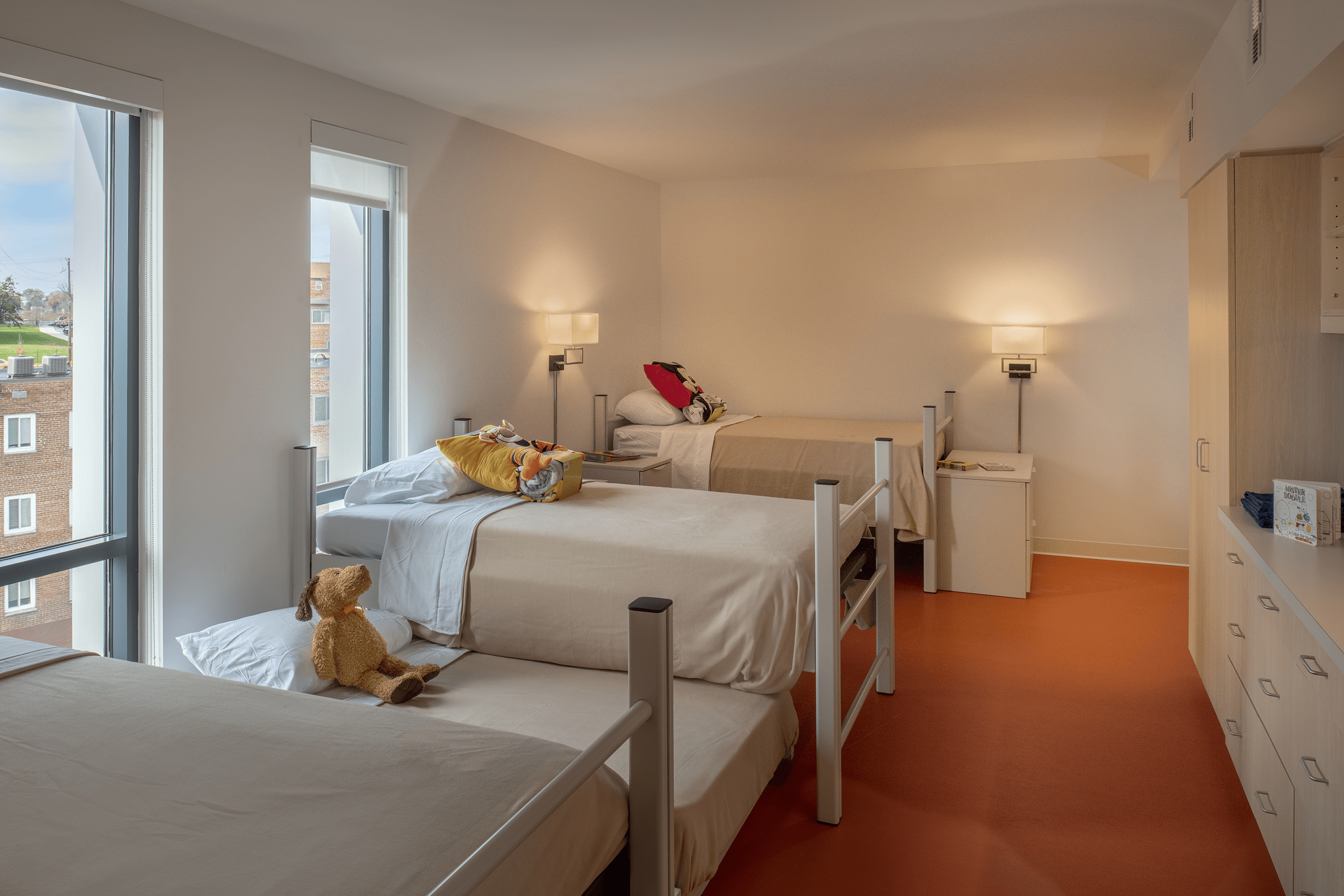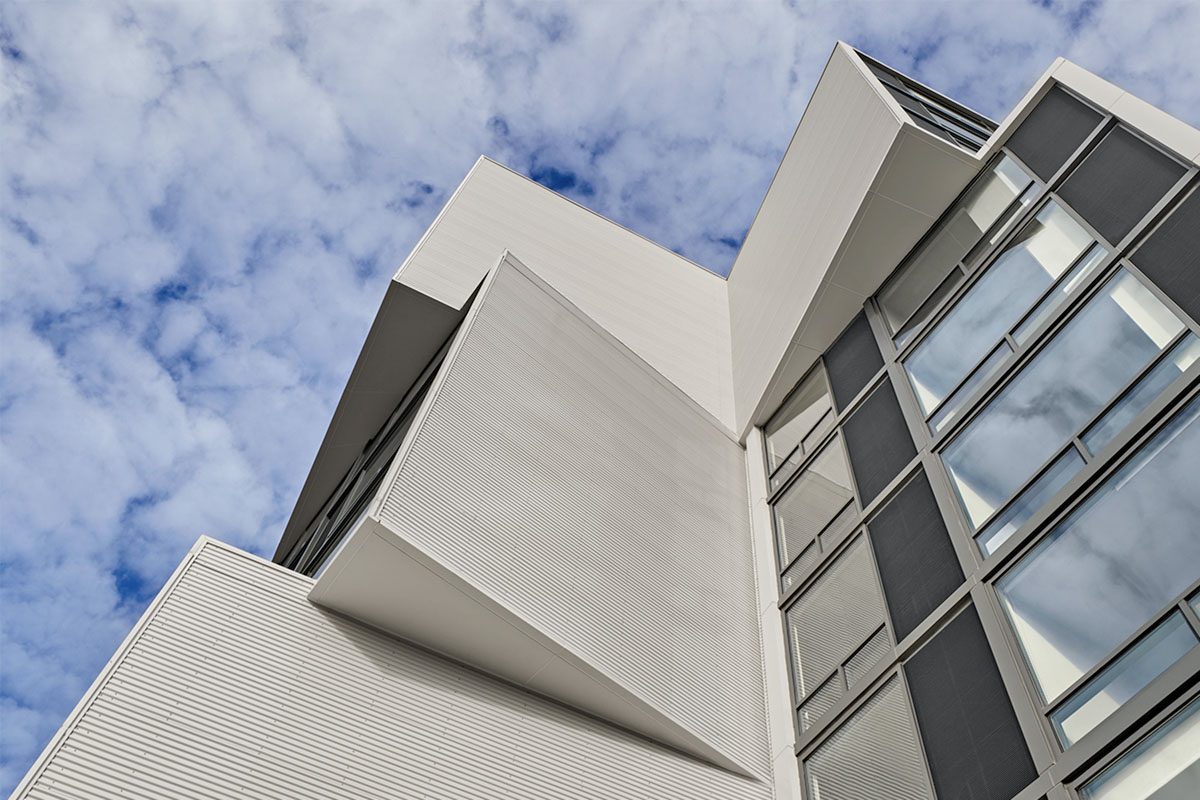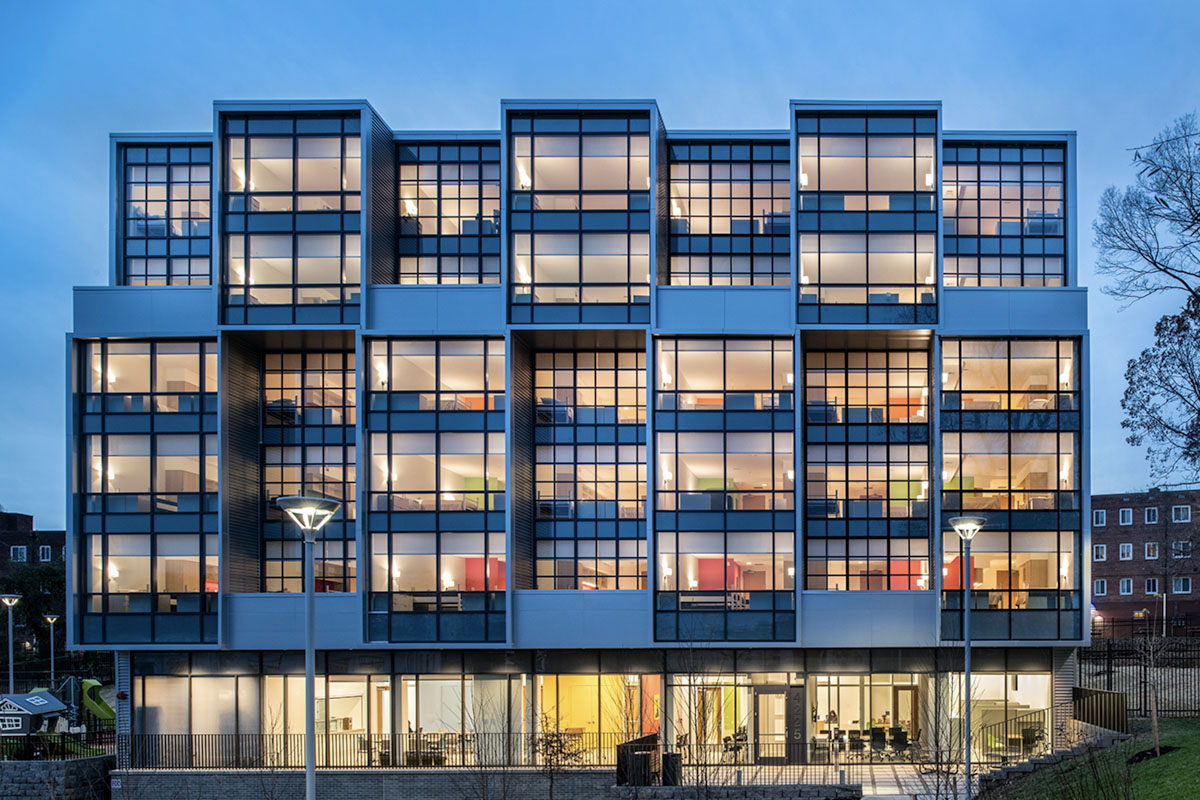Housing for the Homeless
Homelessness impacts individuals, communities, and cities in ways that are easily seen and others that are hidden from view. We all have a critical need to feel safe and secure in a place that we can call home.
Design for those without shelter is more than a matter of throwing together a block of units, because homelessness does not happen in a vacuum. Systems that address underlying causes – trauma, addiction, chronic illness, mental health – need to be baked into the solutions we propose, in ways that can be delivered with empathy and respect.
We believe that thoughtful architecture and planning that recognizes the varying needs of individuals can provide stability and support for people recovering from the trauma of homelessness. That stability radiates out and enhances the well-being of entire communities.
We have worked with government agencies, developers, and non-profit and for-profit partners to create housing solutions that address the specific and complex needs of these clients. In short-term housing, transitional housing, and long-term supportive housing, we create projects that foster a sense of belonging and promote equity and dignity for residents.
In one case the city had a vacant property in an up-and-coming neighborhood and a specific need to provide supportive housing. A public-private partnership brought the funding together from multiple sources. We developed a design that is at once beautiful and practical, with sustainable building materials and resident-friendly, light-filled spaces. Conventional amenities (fitness center, ground-floor retail) were complemented by facilities to provide on-site support for the medical, social, and emotional needs of the residents. What was a public eyesore became an architectural gem, with a mix of supportive housing and workforce housing. Its profile enhances the block and its presence stabilizes the surrounding community.
Another project focused on homelessness as it is experienced by entire families. Families are not well-served by conventional shelters or housing that targets the stereotypical solitary individual. Our solution situated a 50-unit structure so that it visually belongs to the neighborhood. It is closely connected to a wide range of essential medical services and 24-hour support. As a temporary housing program, residents receive on-site help in securing more permanent housing. The knock-on effects of family homelessness – educational disruption, job loss, deterioration of physical and mental health – are addressed directly for families in transition.
Social issues like homelessness can seem intractable, without hope for sustained progress. Our approach brings expertise to share with relevant visionaries. Many hands make great things possible.






